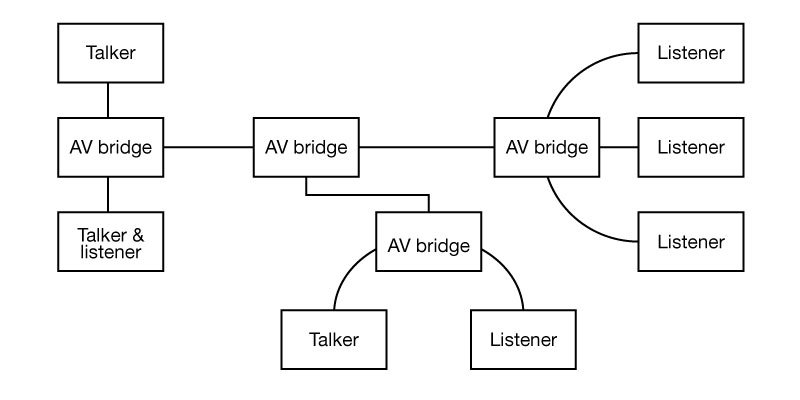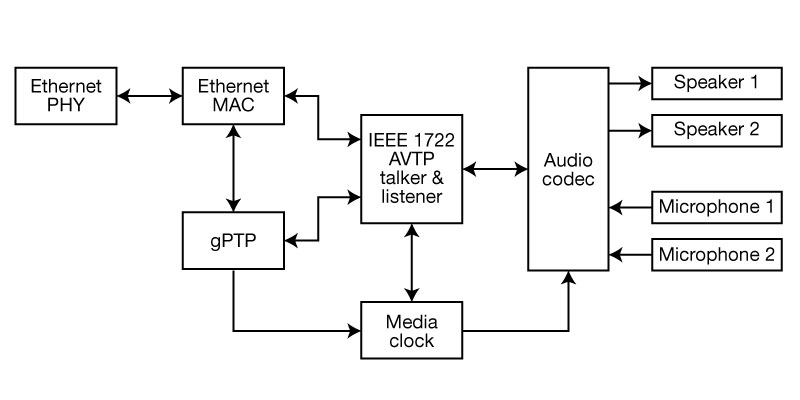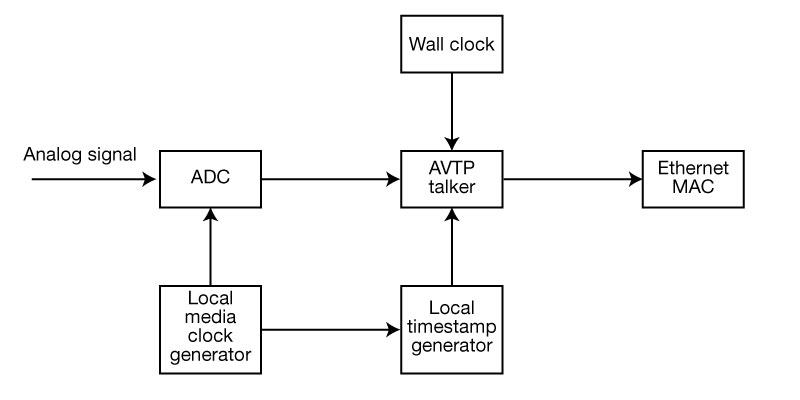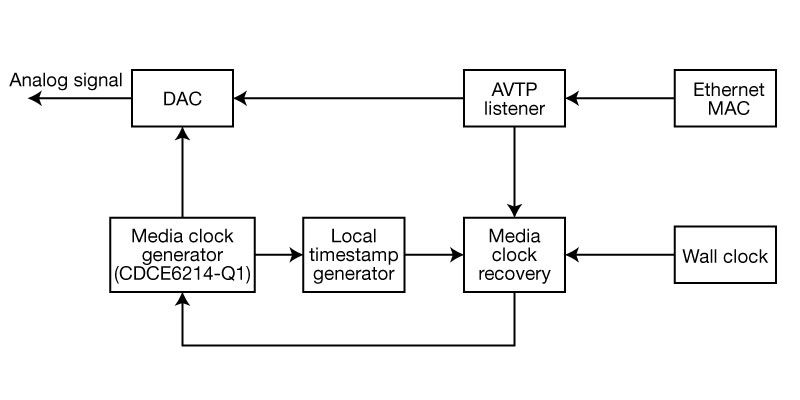SSZT305 may 2020 CDCE6214-Q1
According to a study from the U.S. Department of Transportation1, the average American spends the equivalent of just under 2 1/2 weeks behind the wheel every year. The longer drivers and passengers spend in cars, the greater their need for real-time data transmission and in-vehicle entertainment.
Consequently, premium audio is becoming one of the biggest growth areas for automotive infotainment systems such as automotive head units, with audio-video bridging (AVB) a key focus area. This article explains how to optimize eAVB through clocking solutions to enable high-speed data transmission in vehicles.
Ethernet AVB (eAVB) standards
- Avoiding packet losses caused by high network traffic.
- Keeping packets from bunching and delivering packets with bounded latency.
- Time-synchronizing to a global clock to ensure alignment to a master clock.
- Producing time-aware packets.
Synchronization in eAVB
- Common time referencing so that multiple events can trigger simultaneously.
- Synchronizing all media clocks in the media domain so that the analog-to-digital converters and digital-to-analog converters that deal with a designated stream can have the exact same sampling rate.
Optimizing media-domain synchronization requires a clocking solution with frequency-margining capability such as the CDCE6214-Q1, which is a compact and ultra-low-power programmable clock generator that supports output frequency tuning and has a step size less than 1 ppm.
A typical AVB network, as shown in Figure 1, consists of three main components:
- AV bridges: A relay device that conforms to IEEE 802.1BA.
 Figure 1 Example of a Typical AVB Network
Figure 1 Example of a Typical AVB Network - End stations (as shown in
Figure 2): A talker, listener or both. A talker is an end station that is the
source, transmitter or producer of a stream. A listener is an end station that
is the destination, receiver or consumer of a stream.
 Figure 2 AVB End-station Block
Diagram – Talker and Listener
Figure 2 AVB End-station Block
Diagram – Talker and Listener - Local area network (LAN): An interconnect for bridges, talkers and listeners.
Clocks (generators) for synchronization in eAVB
 Figure 3 Simplified Block Diagram of an AVB Talker
Figure 3 Simplified Block Diagram of an AVB TalkerFigure 4 depicts how to use presentation time to recover the stream’s media clock.
 Figure 4 Simplified Block Diagram of an AVB Listener
Figure 4 Simplified Block Diagram of an AVB ListenerFigure 4 shows how a listener extracts presentation timestamps and recovers the source media clock from the incoming stream generated by a talker. The time difference between two presentation timestamps divided by the number of samples in between gives you an estimate of the source media clock in the gPTP time base. Continually performing this calculation and applying appropriate filtering techniques yields an accurate measurement of the source’s media clock period.
Similarly, it is possible to timestamp the local media clock generator’s output with a local time base that is then translated to a gPTP time base in order to accurately measure its period. After comparing the two clock periods, the media clock recovery module continually generates commands to incrementally increase or decrease the output frequency of the clock generator, thus synchronizing the local media clock to the source media clock.
Conclusion
Citations
- United States Department of Transportation. (2017). How Much Time Do Americans Spend Behind the Wheel?